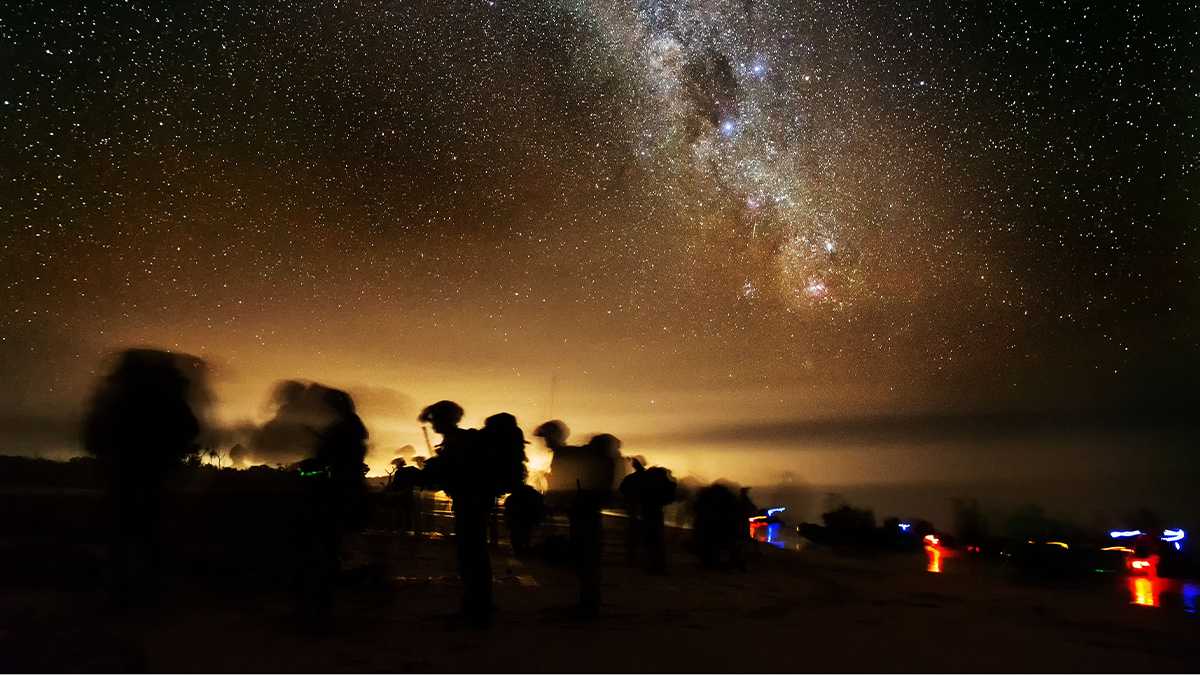Innovation
The US PACFLEET published video of a successful Solid State Laser test (destroying a UAV) from on-board the USS Portland in the Pacific Ocean, the first such use of a high-energy class solid-state laser (the US Navy has operated laser weapons previously). The weapon could be employed against UAV or small armed watercraft, or it could defend against attacks from land based missile systems, in which conventional defensive fires via intercept would usually be overwhelmed. In 2015, the program manager said this laser system would be cost-efficient, with each ‘shot’ costing about the price of a gallon of diesel fuel. The public release of this footage and accompanying statement signals to rivals and non-state actors (such as pirates and maritime militia) that the US Navy is prepared to employ cutting edge technology in the Pacific.
A C4ISR opinion piece highlights the vulnerabilities of GPS for military use and in critical civilian infrastructure, and argues for urgent improvements in resiliency by deploying complementary technologies that provide trusted GPS data and make positioning, navigation and timing resilient to attack, preventing interference by commercial solutions and state actors.
Two US Senators introduced bipartisan legislation that would require the establishment of a U.S.-Israel operations-technology working group to ensure U.S. ‘warfighters never encounter a more technologically advanced foe.’ This theme is reinforced by the Center for New American Security which ‘presents a blueprint for a community of technology innovation and protection anchored by America and its allies,’ arguing ‘current mechanisms for cooperation lack sufficient resourcing, move too slowly, or feature rigid constraints on participation.’ Such an exchange of ideas and cooperation is clearly of interest to Australia, to exploit advances in technology while sharing the costs, to build new partnerships and strengthen existing ones, and to participate in a new forum that will help to balance and strengthen regional security.
Cyber and Information Warfare
A series of articles have been examined in this past week from Graphika, a company focused upon social media analysis. Over a series of reports published during the past six months, topics were explored ranging from the employment of AI to generate fake user photos, through existing disinformation networks pivoting to leverage the Coronavirus “Infodemic,” to a Russian Internet Research Agency operation in Ghana that sought to sow fractures within the U.S. African-American community. The collective picture painted by these reports is that proliferation of disinformation operations is clearly being undertaken by an expanding range of actors – state, non-state and proxy.
Major Power Competition
Jane’s reports on developments in the US Army’s Extended Range Artillery Projectile program, intended to ‘maximise performance at a system level and regain lethality overmatch for US army 155mm indirect-fire systems for operations in emerging battlespaces and near-peer environments.’ Raytheon has been handed a contract based on a ‘design envisaging a ramjet-powered guided 155mm artillery round capable of precision engagement of moving and stationary high-value targets on land and at sea in all weather conditions and on all terrain. The Army’s publicly stated objective range for the round is 100 km.’
Irregular Warfare and Terrorism
A recent Modern Warfare Institute (MWI) blog argues irregular warfare will not go away, despite a renewed focus on conventional warfare, however the way in which it is employed will change due to advances in technology. This argument is elaborated upon with MWI’s new Irregular Warfare Podcast which published its first episode, ‘What are Small Wars.’ The Irregular Warfare Podcast aims to bridge the gap between scholars and practitioners. Here the panel debates the relevance of small wars in a period of great power competition, and what the US and its allies have learnt (and are still to learn) from recent experiences.
Climate Change
A new article from CSIS builds on reports from The Center for Climate and Security (CCS) and The International Military Council on Climate and Security (IMCSS), warning that climate change will ‘likely cause widespread permanent migration that transcends international borders and increases the likelihood of regional instability.’ Indicators of this prediction have been supported by this week’s report that 450 people died from, and 80% of Australians were affected by, bushfire smoke this summer. CSIS suggests that military-to-military cooperation built around adaptation and climate resilience offers an alternate means to regional engagement. While the majority of solutions will be found by civilians, security forces should engage on and show leadership on preparing for climate change.
Longer Reads
ASPI published ‘North of 26 degrees South and the security of Australia: Views from the Strategist Volume 2,’ a series of articles exploring the continued importance of Northern Australia to national security and defence strategy. The main thrust of the publication steers towards a re-examination of and re-investment in northern Australia by Defence.
Podcasts
MWI’s latest episode of ‘The Spear’ discusses the 2008 ‘Battle of Wanat’ in eastern Afghanistan, in which around 200 Taliban fighters attacked a group of US and Afghan soldiers. It is one of the deadliest battles for US forces during the war in Afghanistan.
The War Room published a pod explaining and asking questions of the US DoD’s acquisition process.




